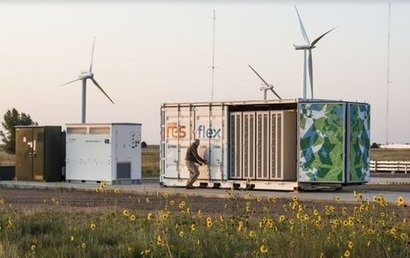
The report, written in collaboration with the Climate Change Advisory Council, warns that barriers to storage development could slow down the renewables transition, with LDES a vital component of Ireland's journey to net zero.
It has been estimated by EirGrid that to meet Ireland’s ambitious target to derive 80 percent of its electricity from renewables by 2030, LDES capacity will need to reach ~2.4 GW. At present there is only 0.29 GW of LDES on the Irish grid, all coming from a pumped storage hydro (PSH) asset operational at Turlough Hill. Another 0.36GW of PSH is planned at Silvermines in Tipperary.
The new report, ‘Review of deployment of long duration energy storage in the electricity sector in Ireland’ is cautioning that without an increase in the speed of the LDES rollout, Ireland may fall short of its 2030 renewables target, as it is contingent upon energy storage and other flexible technologies providing the essential backup for intermittent renewable sources.
The roll out of LDES technologies is facing a number of challenges. The high capital cost of LDES mean they need as much revenue certainty as possible, which is being hindered by a lack of clear policy. In many instances LDES is blocked from full participation in the revenue streams that do exist because of regulatory and market design limitations. Development of specific targeted revenue streams is crucial for unlocking the potential and addressing the need for LDES in Ireland.
The urgency to deliver LDES is compounded by the expected surge in electricity consumption, with Cornwall Insight’s Single Electricity Market Curve - SEM Benchmark Power Curve - showing demand for electricity in the SEM expected to more than double between now and 2050, from ~35 TWh in 2024 to ~44 TWh in the early 2030s and nearly 74 TWh by 2050. This is due to both an increase in demand requirements from existing sources such as residential, commercial, and industrial, and new sources, such as EV charging, heat, electrolysis, and carbon capture technologies.
“The growth in long duration energy storage in Ireland has been sluggish at best and downright poor at worst” said Ratnottama Sengupta, Senior Consultant at Cornwall Insight. “As Ireland forges ahead in its transition to a renewables-dominated electricity system, flexibility assets, such as long duration energy storage will become key to adding resilience and security to our electricity system when the wind doesn’t blow, and the sun doesn’t shine. The SEM is currently missing a key part of the sustainable energy puzzle. While there are some actions being taken to procure LDES by EirGrid and ESB Networks, there is a lack cohesion and it is a slow process. We need to see the government take a more proactive role in developing policy, fostering clarity, and providing incentives to build these storage assets. Without these changes, Ireland risks falling short on its renewable energy goals.”
For additional information:
‘Review of deployment of long duration energy storage in the electricity sector in Ireland’ (report)

